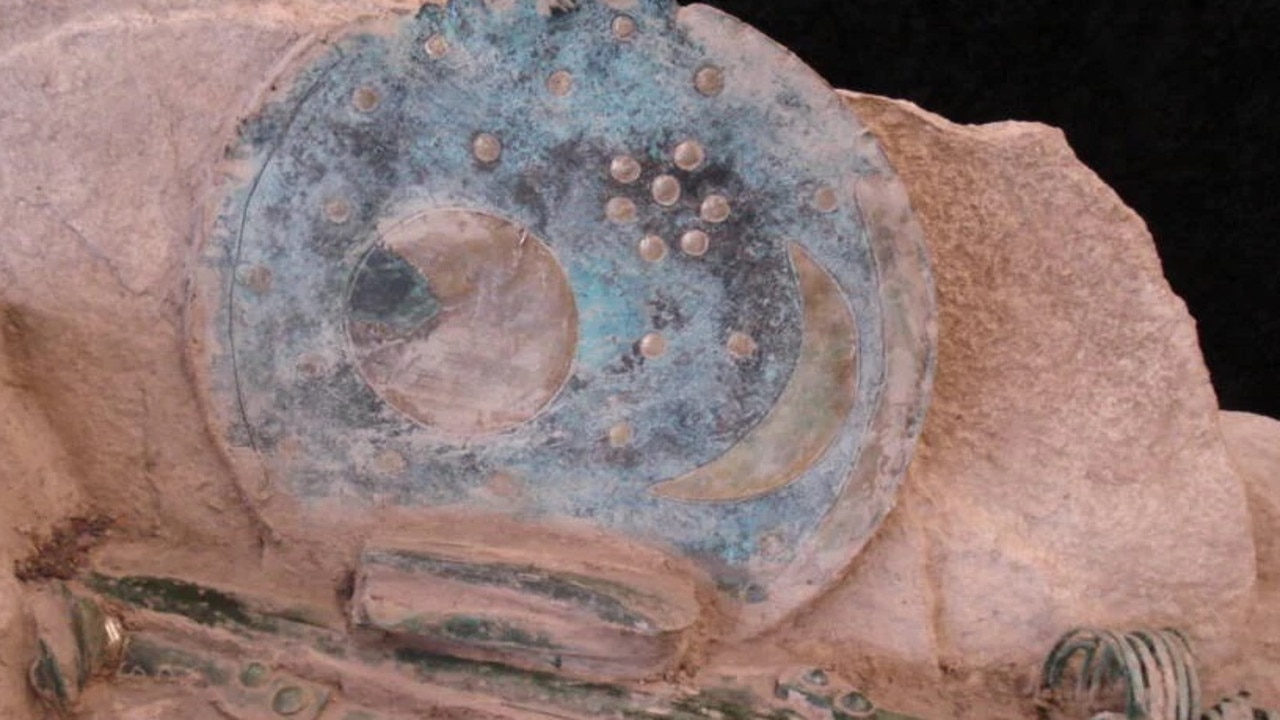King Tutankhamun's mummified erection shows religious struggle, research suggests
NEW research suggests Tutankhamun's mummified erection may have been an attempt to combat a religious revolution unleashed by the boy-king's father.

RESEARCHERS have long been baffled over the unusual embalming of Egypt's King Tutankhamun -- including having his penis mummified erect.
But a new study suggests the anomalies may have been attempts to make King Tut appear as Osiris, the god of the underwold, in an effort to combat a religious revolution unleashed by the boy-king’s father.
Not only did Tutankhamun have his penis mummified at a 90-degree angle, he was also buried without a heart and covered in a thick layer of black liquid that may have caused his body to catch fire.
Egyptologist Salima Ikram, a professor at the American University in Cairo, argues in a new paper that the erect penis evokes Osiris' regenerative powers; the black liquid made Tutankhamun's skin color resemble that of Osiris; and the lost heart recalled the story of the god being cut to pieces by his brother Seth and his heart buried, according to Science Live.
The paper, published in the journal Études et Travaux, argues that making the king appear as Osiris may have helped to undo a religious revolution brought about by Akhenaten, a pharaoh widely believed to be Tutankhamun's father.
Akhenaten is said to have attempted to re-focus Egyptian religion around the worship of the Atken, the sun disc, by destroying images of other traditional Egyptian gods.
Ms Ikram’s idea – which she admitted was speculative – is that Tutankhamun’s unusual mummification was designed to undo these changes and return Egypt back to its traditional religion with its mix of gods.
"Tutankhamun is shown as a fully fledged Osiris — not simply a wrapped mummy," Ms Ikram said in the paper. "This representation of the king as Osiris is unique in the Valley of the Kings: Other tombs show the king being embraced by Osiris or offering to him."
The study builds on new evidence suggesting King Tut’s body accidentally combusted when it was inside his sarcophagus, as revealed in a documentary for UK’s Channel 4 in November.
Researchers argued in the documentary that embalming oils -- applied more liberally than usual -- combined with oxygen and linen to cause a chemical reaction which literally cooked the king's body at high temperature.
"The mass of oils and resins applied to Tutankhamun's body might also allude to the black color associated with Osiris as lord of the land of Egypt, dark with the rich soil of the inundation, and the source of fertility and regeneration," Ms Ikram said.
"One can speculate that at this delicate historical/religious time, it was thought that the usual modes for the transformation of the king were not sufficient, and so the priest-embalmers prepared the body in such a way so as to literally emphasise the divinity of the king and his identification with Osiris."



